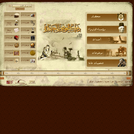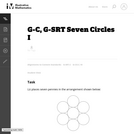
This lesson is designed to help with coin identification and counting coin sums.
- Subject:
- Mathematics
- Material Type:
- Activity/Lab
- Date Added:
- 04/23/2019

This lesson is designed to help with coin identification and counting coin sums.

In this electrochemistry activity, learners will explore two examples of electroplating. In Part 1, zinc from a galvanized nail (an iron nail which has been coated with zinc by dipping it in molten zinc) will be plated onto a copper penny. In Part 2, copper from a penny will be plated onto a nickel.

This activity is designed to teach the attributes of each coin (penny, nickel, dime and quarter), including physical characteristics and value.

This Arabic-only website is an effort to record and preserve information on the culture and history of modern Egypt from the reign of Muhammad 'Ali starting in 1805 to the end of Sadat's presidency in 1981. Materials on this site include pictures of coins from this era, maps, stamps, medals, books, documents, photos, recordings, information on movies, speeches, newspaper articles, magazine covers, and more.

This lesson is designed to help with coin identification and counting coin sums.

This task is intended to help model a concrete situation with geometry. Placing the seven pennies in a circular pattern is a concrete and fun experiment which leads to a genuine mathematical question: does the physical model with pennies give insight into what happens with seven circles in the plane?